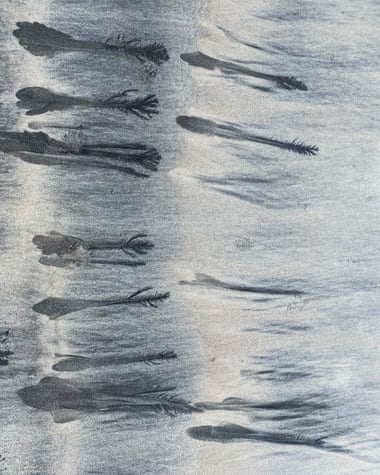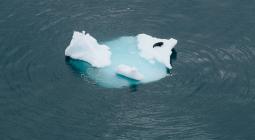Country diary: watching a still from a gargantuan motion picture.

Eigg, West Highlands: The view beneath my feet, of paper-thin exoskeletons of a type of sea urchin, is also captivating.
At Laig beach on the island of Eigg, the tide has withdrawn to reveal a vast intertidal zone where black basalt and white shell sands plait together, weaving and interweaving to produce a neat and monochrome twill.
Here and there, the delicate, skull-like structures of sea potatoes protrude through this smooth and glossed surface; pierced through with tiny holes tracing a star-shaped pattern, they are the paper-thin exoskeletons of a type of sea urchin. Some still bear what looks like ruffled clumps of taupe-white fur: tiny spines, not yet fallen away.

It’s peaceful here, in the late October morning. The unseasonably hot weather of the previous week is in retreat, the sun is muffled by a thin layer of cloud. A flock of black-backed gulls pick their way through the foam at the water’s edge, but it is only the ravens who make themselves heard, their raw and rasping voices carrying across the empty beach as they bounce a conversation back and forth between distant fenceposts.
As we walk out upon the wet sand – tiny ants on a great, flat expanse – I start to lose my grip on time and space. Things seem to stretch away, then concertina around us. The sky above, enormous and dramatically backlit. And across the water, the jagged profile of Rum, its ragged ridgeline all that remains of an enormous caldera, the great volcano that produced that island, and this one too.
Ancient volcanic activity also explains this beach’s dark sands, which trickle away between my feet. I crouch down, zoom in. Water draining from the higher ground drags with it the smallest, lightest grains, to leave only the heaviest, darkest ones. Over time, this process cuts strange etchings into the canvas of the sand: black, forbidding trees with gnarled branches and spreading roots; elsewhere, crowns of dark thorns wreathe the ground around pebbles and strands of seaweed, like fateful auras.
The forces of geology at work: colossal and minuscule; instantaneous and constant. And us, standing here, looking out across the land, as if it were a still from a gargantuan motion picture. Our lifespans barely a blink of geological time. Yet it passes for us too. My stomach rumbles. Time for lunch.
5 November 2020
The Guardian




